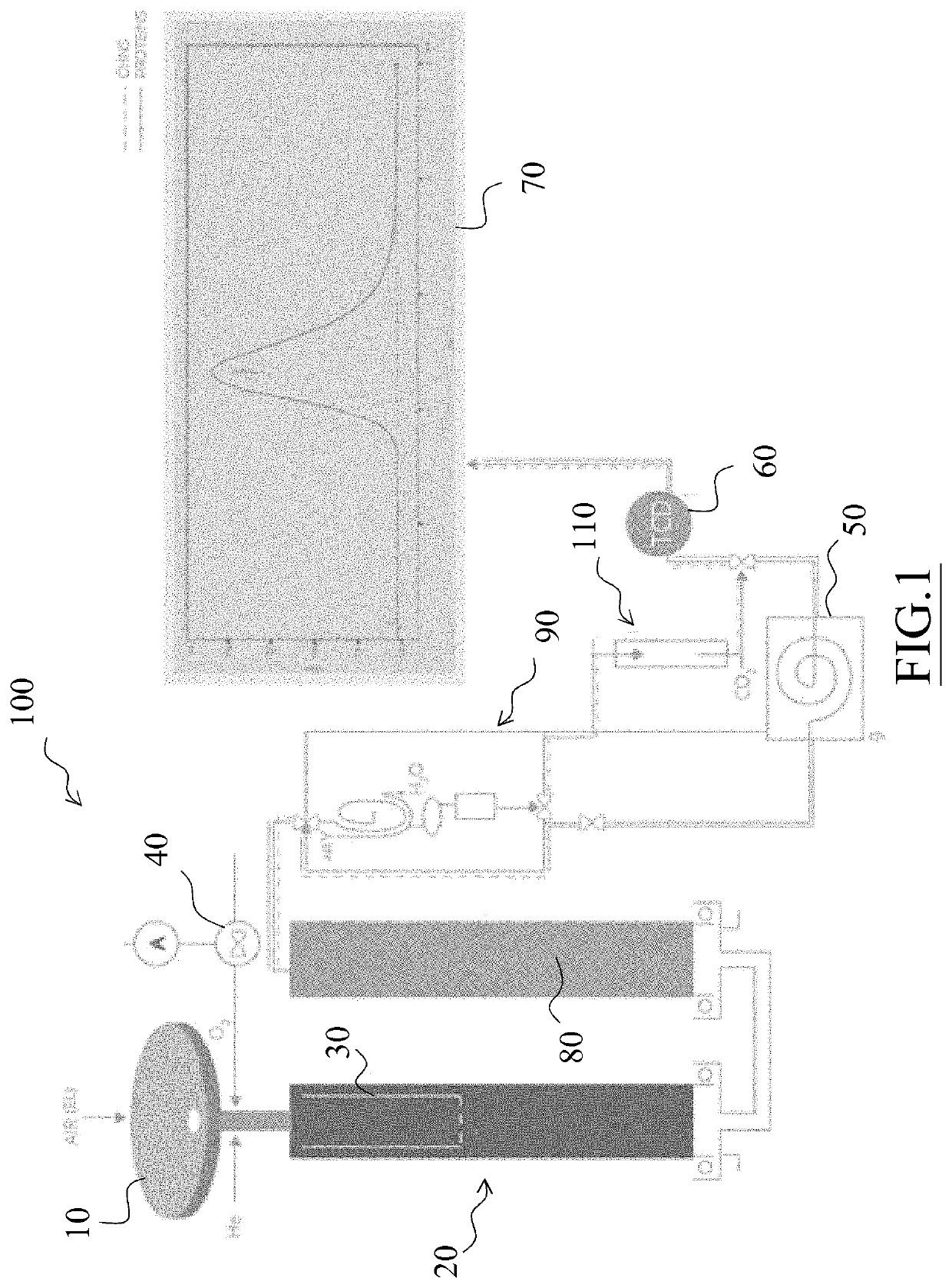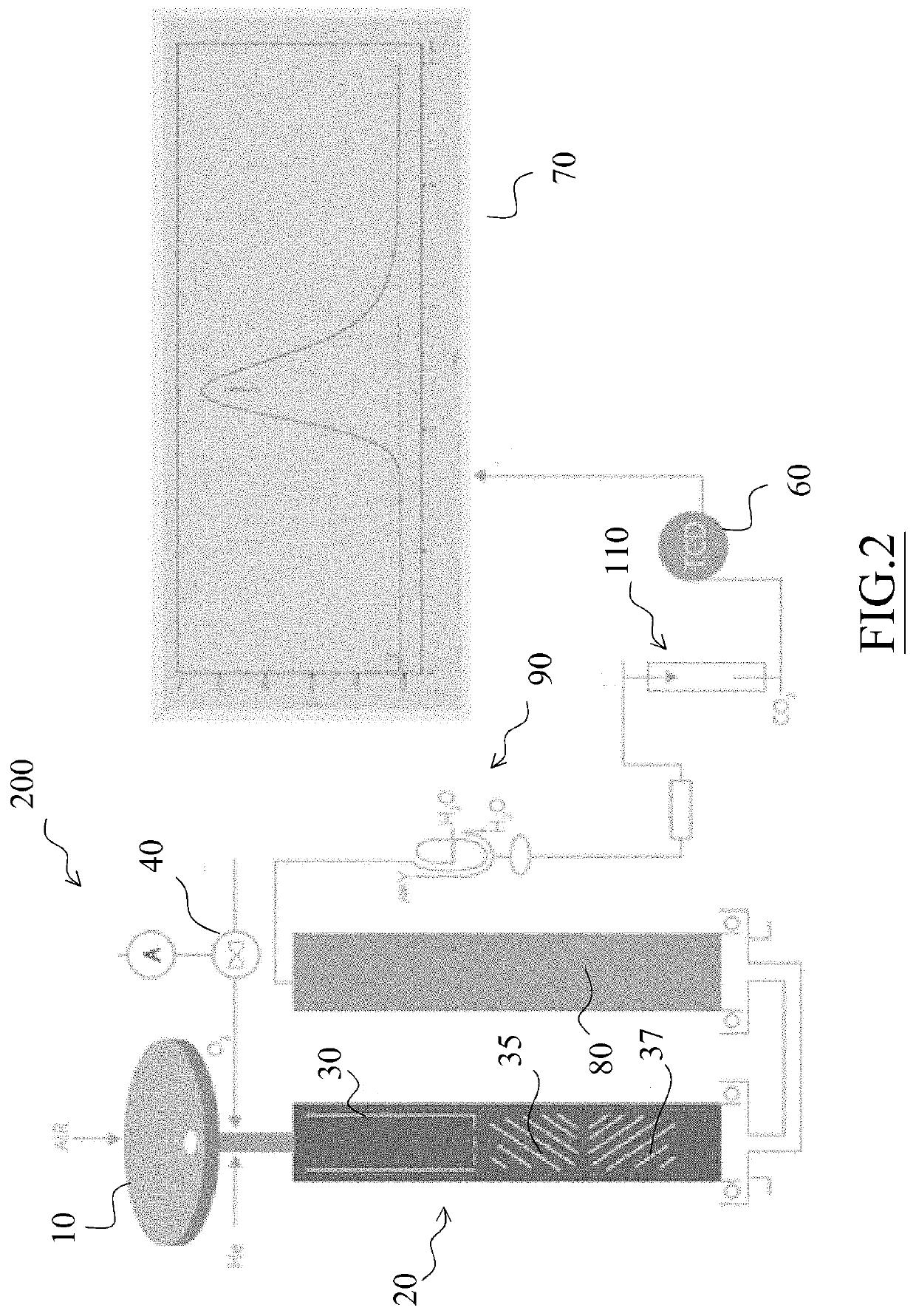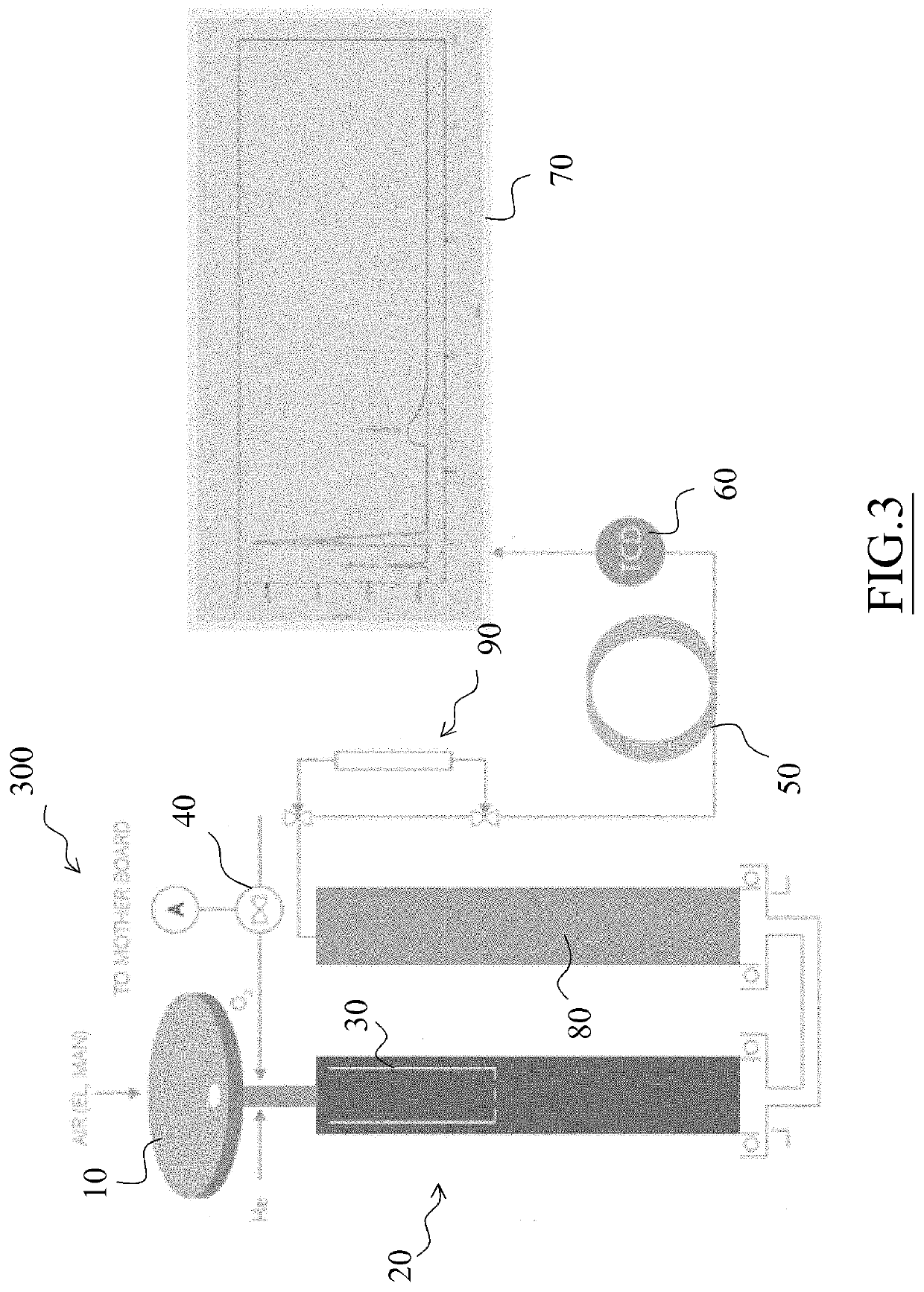Automatic analyzer for the detection of chemical elements in organic compounds
- Summary
- Abstract
- Description
- Claims
- Application Information
AI Technical Summary
Benefits of technology
Problems solved by technology
Method used
Image
Examples
Embodiment Construction
[0022]The invention will now be described with reference to the accompanying drawings.
[0023]In particular, FIG. 1 shows a flow chart of a first embodiment of the analyzer of the invention, indicated as a whole by reference numeral 100.
[0024]The analyzer 100 is equipped with an automatic sampler 10, preferably a 120 position-sampler, consisting of three overlapping carousels each comprising 40 positions.
[0025]The sampler 10 is driven by a pneumatic device which, while allowing a sample to fall into the combustion reactor, simultaneously loads the next sample on a piston-driven slide within the sampler. Through the sampler, oxygen and helium are also introduced into the system.
[0026]The sampler 10 is provided with a “purging” zone to flush any air residues (i.e. N2) with a He flow.
[0027]The sampler 10 feeds samples weighed and contained in Tin or Silver capsules to an oxidation reactor 20 which has a first stage consisting of a combustion chamber and an ash accumulation zone, also inc...
PUM
 Login to View More
Login to View More Abstract
Description
Claims
Application Information
 Login to View More
Login to View More - R&D
- Intellectual Property
- Life Sciences
- Materials
- Tech Scout
- Unparalleled Data Quality
- Higher Quality Content
- 60% Fewer Hallucinations
Browse by: Latest US Patents, China's latest patents, Technical Efficacy Thesaurus, Application Domain, Technology Topic, Popular Technical Reports.
© 2025 PatSnap. All rights reserved.Legal|Privacy policy|Modern Slavery Act Transparency Statement|Sitemap|About US| Contact US: help@patsnap.com



